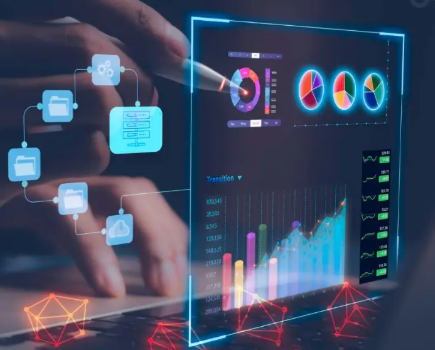
In the digital age, we are generating more data than ever before. Between 2013 and 2023, global data production skyrocketed from 9 zettabytes to 120 zettabytes—a 1,200% increase. This explosion of data presents businesses with an opportunity to harness valuable insights, such as customer behavior patterns and sales forecasts, to drive better decision-making. However, many companies struggle to tap into this wealth of data effectively.
In this blog post, we will explore how predictive modeling and statistical analysis can help businesses unlock the potential of data to make more informed decisions and add value across various industries.
What is Predictive Modeling?
Predictive modeling is a technique that uses statistical tools and historical data to forecast future outcomes. By analyzing past behaviors and events, businesses can predict future trends and make decisions based on data-driven insights. There are different types of predictive models, such as:
- Time Series Models: These analyze data collected over time to predict future events, like forecasting weather patterns.
- Regression Models: These models identify relationships between variables, such as the connection between economic indicators and future housing market trends.
- Decision Tree Models: These represent decisions and outcomes in a flowchart-like structure to guide decision-making.
Data Collection and Preprocessing
The first step in building a predictive model is gathering relevant data. The questions you need answers to will determine the types of data you collect. For example, if you’re predicting future software sales, you might collect data on customer purchase patterns and similar product sales.
Once data is collected, the next step is preprocessing. This involves cleaning the data to remove duplicates, fix errors, and fill in missing values. Proper data preparation is critical for building reliable predictive models.
Exploratory Data Analysis (EDA)
Before diving into complex analysis, it’s essential to explore your data. EDA helps identify patterns and outliers in a dataset, allowing you to gain an initial understanding. Using data visualization tools like histograms or scatter plots can reveal trends and potential issues, helping you make informed decisions about how to proceed with further analysis.
Statistical Analysis Techniques
Predictive modeling relies heavily on statistical methods. Two of the most common approaches include:
- Descriptive Statistics: This method summarizes data characteristics, such as mean, median, and standard deviation.
- Inferential Statistics: This technique allows you to draw conclusions from data by comparing predictions against actual results.
Machine Learning Algorithms in Predictive Modeling
Machine learning is a subset of predictive modeling that enables systems to learn from data and improve over time. For instance, hospitals can use machine learning algorithms to analyze patient data and predict the best treatment options.
Machine learning models typically learn in two ways:
- Supervised Learning: The model is trained with labeled data, meaning the input and correct output are known.
- Unsupervised Learning: The model works with unlabeled data, finding patterns and relationships on its own.
Building and Training Models
When creating a predictive model, data scientists often divide their data into two sets: one for training the model and another for testing it. The training data is used to teach the algorithm how to make predictions, while the test data is used to evaluate the model’s performance.
Evaluating Model Performance
To determine how well a predictive model works, it’s important to measure its accuracy. Common metrics for assessing performance include:
- Root Mean Squared Error (RMSE): Measures the difference between predicted and actual values.
- Mean Absolute Error (MAE): Calculates the average difference between predicted and actual values.
- Variance Ratio Criterion: Helps measure how well the model separates different data clusters.
Feature Selection and Engineering
Feature selection involves choosing the most relevant data features for a model, while excluding irrelevant ones. This ensures that the model is trained on important data, improving accuracy and performance. Feature engineering, on the other hand, involves transforming raw data into features that better suit the predictive model.
Overfitting and Regularization
Overfitting happens when a model learns too much from the training data, including noise or random fluctuations. Regularization techniques, such as feature ranking, help prevent this by limiting the complexity of the model and focusing on the most significant features.
Interpreting and Explaining Predictive Models
Once a predictive model is built, it’s important to interpret its results clearly. This can be achieved through input-response analysis or data visualization techniques, which help explain how the model makes its predictions. These methods allow decision-makers to understand the reasoning behind the model’s output.
Applications of Predictive Modeling in Business
Predictive modeling has wide-ranging applications across industries. Some common uses include:
- Fraud Detection: Identifying suspicious activity in banking and finance.
- Customer Churn Prediction: Anticipating which customers are likely to leave and enabling targeted retention strategies.
- Supply Chain Optimization: Predicting demand and adjusting inventory levels accordingly.
- Sales Forecasting: Estimating future sales to help businesses plan marketing and staffing.
Ethical Considerations in Predictive Modeling
While predictive modeling offers immense benefits, it also raises ethical concerns. For example, Target faced criticism for using predictive analytics to identify a pregnant customer and send targeted advertisements for baby products. It’s essential for businesses to apply predictive analytics responsibly, adhering to principles like:
- Accountability
- Human-Centricity
- Inclusivity
- Transparency
Successful Predictive Modeling Applications
Here are a couple of examples of how predictive modeling is being used effectively:
- Efficiency Vermont: This organization uses predictive modeling to analyze energy consumption patterns and help businesses reduce their carbon footprint.
- FedEx: By collecting real-time data, FedEx improves its delivery forecasts, ensuring that it meets demand more accurately.
Conclusion
Predictive modeling and statistical analysis are powerful tools that enable businesses to make data-driven decisions, optimize operations, and improve customer experiences. However, successful implementation requires careful data preparation, model selection, and ethical considerations. By harnessing the power of predictive analytics, organizations can gain a competitive edge and make smarter decisions for the future.












